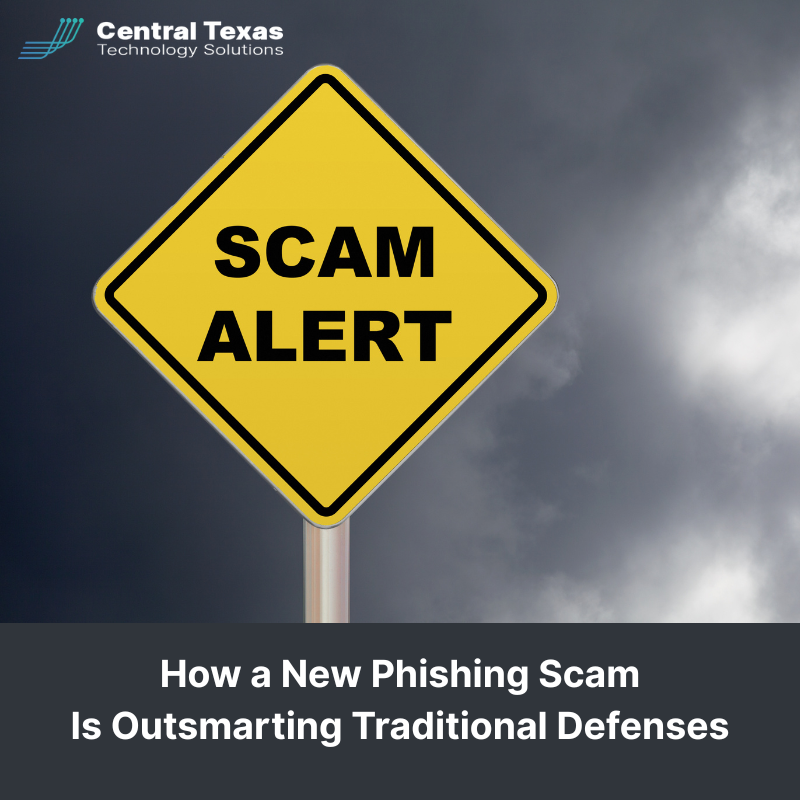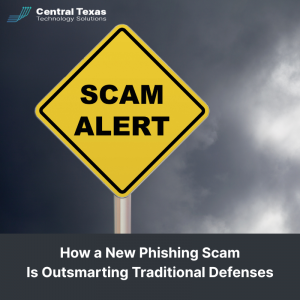
 A growing number of cyberattacks are no longer quick smash-and-grab attempts. Criminals are adapting, and their new strategies are catching even the most careful businesses by surprise. This latest phishing scam is proof.
A growing number of cyberattacks are no longer quick smash-and-grab attempts. Criminals are adapting, and their new strategies are catching even the most careful businesses by surprise. This latest phishing scam is proof.
Instead of blasting out suspicious emails, these attackers are taking their time to build trust and bypass traditional security measures. For business leaders across Austin, this is a wake-up call to strengthen defenses and protect sensitive information before it is too late.
Understanding How a Phishing Scam Works
Phishing scams have always been designed to deceive. In this new wave of attacks, the tactic is slower and more convincing. According to cybersecurity experts, attackers are posing as legitimate US-based companies that appear to be seeking new partners, suppliers, or vendors.
Here is how they build credibility before making their move:
- They purchase abandoned or dormant domains that once belonged to real businesses.
- They use these domains to contact potential victims through “Contact Us” forms and other legitimate website channels instead of mass email blasts.
- Their message appears professional, reducing the likelihood of immediate suspicion.
By the time most businesses realize something is wrong, the damage has already begun.
Creating a False Sense of Security Through Social Engineering
Traditional phishing scams rely on urgency and fear to trick victims into clicking malicious links right away. This new phishing scam takes a more patient route. Attackers establish a back-and-forth conversation, sometimes over several weeks, to build a sense of trust.
Their ultimate goal is to convince the victim to sign a fake digital NDA. This file is cleverly packaged with:
- A clean PDF that appears legitimate
- A DOCX file to build confidence
- A malicious file designed to quietly trigger a PowerShell-based loader
Once the file is opened, the loader deploys MixShell, a backdoor malware that creates an invisible entry point into the network. With that access, attackers can:
- Steal sensitive company data
- Alter or delete important files
- Install more advanced malware
- Gain full control of systems
This slow and calculated strategy gives criminals the upper hand, bypassing the very security layers many businesses rely on.
How Businesses Can Mitigate Phishing Scam Risks
No organization is immune to phishing scams, but the right strategy can significantly reduce the risk. Building a layered defense is the most effective way to protect critical systems.
Raise Cybersecurity Awareness in the Workplace
People remain the most common entry point for phishing scams. One distracted click can open the door to a devastating breach. Training employees to spot red flags is essential. Warning signs include:
- Generic greetings like “Dear Customer” rather than a specific name
- Odd formatting, poor grammar, or spelling errors
- Email spoofing where the domain looks similar to a trusted sender but is slightly off
- High-pressure or fear-based language urging immediate action
When your team knows what to look for, they become your first line of defense.
Invest in Advanced Antimalware Software
Built-in security features on most devices are not enough to stop advanced threats. Comprehensive antimalware software provides:
- Real-time scanning to detect suspicious behavior
- Automatic updates to stay ahead of new attack methods
- Ransomware protection that stops encryption attacks before they spread
This investment helps detect and contain threats before they reach critical systems.
Use Multi-Factor Authentication (MFA)
Even if attackers manage to steal login credentials, MFA can block their access. This extra layer of security ensures that stolen passwords alone are not enough to compromise your systems.
Securing Your Digital Future
Cybercriminals are evolving, and so must your defenses. This phishing scam is more than a headline. It is a reminder that traditional security measures are no longer enough. By training your team, investing in strong security solutions, and adding layers like MFA, your business can stay protected against sophisticated threats.
If your organization is not sure where to start, partnering with an experienced IT team can make all the difference. CTTS works with companies across Healthcare, Legal, Professional Services, Construction, Manufacturing, and Nonprofits in Austin to build resilient cybersecurity defenses that keep business operations safe and secure.
Frequently Asked Questions About Phishing Scams
1. How can I tell if a message is part of a phishing scam?
Look for generic greetings, unusual email addresses, poor grammar, or high-pressure language. If anything feels off, verify the message through a separate trusted channel before responding.
2. What should my team do if someone clicks on a malicious link?
Act fast. Immediately disconnect the affected device from the network, alert your IT team, and change any potentially compromised passwords. The faster you respond, the better you can contain the damage.
3. Why is multi-factor authentication so important for preventing phishing scams?
Even if attackers steal a password, MFA acts as a second lock on the door. It prevents unauthorized access and adds a powerful extra layer of protection.
Contact CTTS today for IT support and managed services in Austin, TX. Let us handle your IT so you can focus on growing your business. Visit CTTSonline.com or call us at (512) 388-5559 to get started!
